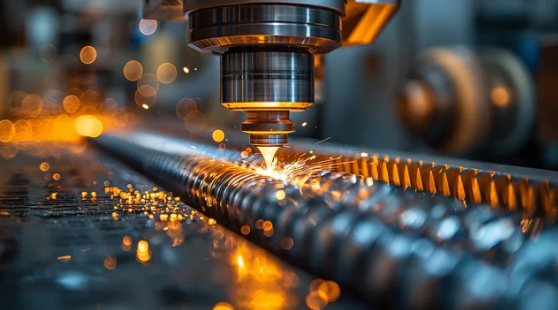Nuclear power plants are among the most complex engineering marvels of the modern world. They produce electricity for millions of people by harnessing the immense energy locked inside atoms. While the principles of nuclear fission may be rooted in physics, it is engineering that transforms theory into reality—designing reactors, managing safety systems, and ensuring efficient energy production.
This article takes you deep inside the core of nuclear power plants, explaining the engineering principles, reactor designs, safety innovations, and challenges that make nuclear power both powerful and controversial.
The Heart of the Plant: How Nuclear Fission Works
At the center of every nuclear power plant lies the reactor core, where nuclear fission takes place. In simple terms, fission is the process of splitting uranium or plutonium atoms to release heat energy. Engineers design intricate systems to control this reaction, ensuring it remains steady, safe, and efficient.
Key engineering elements include:
- Fuel Rods: Contain uranium or mixed oxide fuel pellets that sustain the chain reaction.
- Control Rods: Made of boron, cadmium, or hafnium, they absorb neutrons to regulate the reaction.
- Moderator: Materials like water or graphite slow neutrons, making fission more efficient.
- Coolant: Usually water, it removes heat from the reactor core to generate steam.
The delicate balance of these components showcases the precision engineering required to keep a nuclear reaction both productive and under control.
Reactor Designs: Engineering Approaches to Nuclear Power
Different countries and engineers have developed unique reactor designs, each tailored to safety, efficiency, and fuel availability.
1. Pressurized Water Reactors (PWRs)
- The most common reactor type worldwide.
- Engineers design them to keep water under high pressure, preventing it from boiling in the reactor core.
- Heat from the core is transferred to a secondary loop, which produces steam for turbines.
2. Boiling Water Reactors (BWRs)
- Here, the water inside the reactor is allowed to boil, directly creating steam to power turbines.
- Simpler in design but requires more robust containment systems.
3. CANDU Reactors (Canada Deuterium Uranium)
- Use heavy water as a moderator, allowing natural uranium as fuel.
- Designed for flexibility and long-term fuel efficiency.
4. Advanced Reactors (Generation IV Designs)
- Engineers are developing reactors like Molten Salt Reactors, Gas-Cooled Reactors, and Fast Breeder Reactors.
- These designs promise greater safety, reduced waste, and efficiency in fuel use.
Each design reflects different engineering philosophies, balancing cost, safety, and performance.
From Heat to Power: The Energy Conversion Process
While the reactor core generates heat, it’s the engineering of the steam cycle that turns it into usable electricity.
- Heat from fission warms coolant.
- The coolant transfers heat to water, producing steam.
- Steam drives massive turbines connected to generators.
- Generators convert mechanical energy into electricity.
- Cooling towers or water sources release excess heat.
This process mirrors conventional power plants, but the difference lies in the heat source—nuclear fission instead of fossil fuels.
Engineering for Safety: Protecting People and the Environment
Safety is the cornerstone of nuclear engineering. After past accidents like Chernobyl and Fukushima, engineers have revolutionized safety systems to minimize risks.
Active Safety Systems
These require operator action or mechanical equipment, such as pumps and emergency shutdown systems.
Passive Safety Systems
Modern reactors rely on gravity, natural circulation, and physical laws to automatically cool reactors in emergencies, even without power.
Containment Structures
Engineers build thick concrete and steel domes to prevent radiation from escaping.
Redundancy and Backup Systems
Multiple safety systems run in parallel so that if one fails, another is ready to take over.
Thanks to these engineering solutions, today’s nuclear plants are significantly safer than earlier generations.
Fuel Cycle Engineering: From Mining to Waste
The nuclear fuel cycle is another area where engineering plays a critical role.
- Mining & Enrichment: Engineers process uranium ore and enrich it to increase the concentration of fissile U-235.
- Fabrication: Fuel is manufactured into ceramic pellets, then stacked into rods.
- Operation: Fuel rods power the reactor for several years before being replaced.
- Waste Management: Engineers develop storage and disposal solutions for spent fuel, including deep geological repositories and recycling technologies.
Managing the entire fuel cycle requires both precision and long-term vision.
Challenges Nuclear Engineers Face
Despite its promise, nuclear energy poses unique challenges:
- High Costs: Construction and maintenance require billions in investment.
- Waste Disposal: Long-term storage of radioactive waste is still a political and engineering hurdle.
- Public Trust: Accidents have created skepticism; engineers must design systems that restore confidence.
- Decommissioning Plants: Shutting down old reactors safely requires careful planning and advanced technology.
Engineers are continuously innovating to overcome these barriers and make nuclear energy more viable.
The Future of Nuclear Plant Engineering
The future of nuclear engineering is bright, with groundbreaking projects underway:
- Small Modular Reactors (SMRs): Cost-effective, flexible, and deployable in remote regions.
- Fusion Reactors: Projects like ITER are working to replicate the sun’s power on Earth.
- Digital Monitoring: AI and smart sensors for real-time safety and performance management.
- Green Integration: Nuclear energy supporting hydrogen production and renewable grids.
These innovations could transform nuclear power into one of the most important tools for achieving net-zero carbon goals.
Conclusion
Nuclear power plants are more than just sources of electricity—they are triumphs of human engineering. From the careful design of reactor cores to the development of advanced safety systems, engineers ensure that nuclear energy remains a reliable and sustainable solution for the world’s growing energy needs.
As the push for clean energy accelerates, the engineering behind nuclear power plants will continue to evolve, driving innovations that make nuclear power safer, more efficient, and more central to the global energy future.
Also Read :
